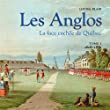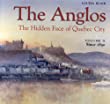-
-
2005-., Éditions Sylvain Harvey Call No: QWF FR SC 971.4471 B635a Availability:1 of 1 At Your Library
-
-
c2005., Commissionde la capitale nationale du Québec Call No: QWF SC 971.4471 B635a v.2 Availability:1 of 1 At Your Library
-
-
2013., McGill-Queen's University Press Call No: SC 720.92 T238w Availability:2 of 2 At Your Library Summary Note: By the year 1900, architect Andrew Taylor had designed Bank of Montreal branches across the continent and much of McGill University, helped found the McGill School of Architecture, and played a critical role in creating the first professional organization for Quebec architects. In The Architecture of Andrew Thomas Taylor, Susan Wagg presents a groundbreaking study of the life and work of a major figure in nineteenth-century Canadian architecture.Born in Edinburgh and trained in Scotland and England, Taylor spent two decades in Canada between 1883 and 1904, designing some of Montreal's most iconic landmarks. Wagg places his career amidst the wealth of opportunities provided by Canada's high society and captains of industry. Taylor's Canadian relatives, Montreal's powerful Redpath family, brought him into contact with the small group of financiers and entrepreneurs who controlled Canada's destiny. With the support of such influential patrons as Sir William Macdonald and the Bank of Montreal, Taylor successfully confronted dramatic changes in building technology as iron and steel were increasingly used and buildings grew ever taller. He innovatively adapted English and American styles to the Canadian environment, designing structures distinctively suited to their place in history.Positioning Taylor's extensive designs within the context of his time, The Architecture of Andrew Thomas Taylor firmly establishes his work as a cornerstone of Canadian architecture.
-
-
By Bell, Angus2008, c2006., Greystone Books Call No: QWF SC 796.358 B433b Availability:1 of 1 At Your Library Summary Note: TRAVEL WRITING. This is a unique and hilarious traveller's tale that redefines the spirit of cricket.Following a chance encounter with a psychic, Angus Bell sets off on an 8,000-mile Skoda-powered road trip across Eastern Europe in search of a cricket match. It's a gloriously batty adventure which brings Bell face-to-face with fingerless fielders in the Czech Republic, Serbian MI6 agents, and the realisation that England's most eccentric game is being played with passion in the strangest corners of the continent.
-
-
2015., Adult, Patrick Crean Editions Call No: SC 971.004 M146c Availability:1 of 1 At Your Library Summary Note: "More than nine million Canadians claim Scottish or Irish heritage. Did the ancestors of more than one quarter of our population arrive without cultural baggage? No history, no values, no vision? Impossible. McGoogan writes that, to understand who we are and where we are going, Canadians must look to cultural genealogy. Scottish and Irish immigrants arrived in Canada with values they had learned from their forebears. And they did so early enough, and in sufficient numbers, to shape an emerging Canadian nation. McGoogan highlights five of the values they imported as foundational: independence, audacity, democracy, pluralism and perseverance. He shows that these values are thriving in contemporary Canada, and traces their evolution through the lives of thirty prominent individuals -- heroes, rebels, poets, inventors, pirate queens -- who played formative roles in the histories of Scotland and Ireland. Two charged traditions came together and gave rise to a Canadian nation. That is when Celtic lightning struck"--Provided by publisher.
-
-
2014., Adult, Penguin Call No: SC Fic McCo Availability:1 of 1 At Your Library Summary Note: Harry Steen, a businessman travelling in Mexico, ducks into an old bookstore to escape a frightening deluge. Inside, he makes a serendipitous discovery: a mid-19th-century account of a sinister storm cloud that plagued an isolated Scottish village and caused many gruesome and unexplainable deaths. Harry knows the village well. It was there that he met the woman whose love and betrayal have haunted him every day since. Presented with this astonishing record, Harry resolves to seek out the ghosts of his past.
-
-
1967., Secker and Warburg Call No: SC 941.07 P922c Edition: 1st ed. Availability:1 of 1 At Your Library Summary Note: Culloden is the story of a battle and of what followed: the destruction of a way of life and the persecution of a people. There is little in this book about Bonnie Prince Charlie and other principals of the last Jacobite Rising of 1745. This is the story of ordinary men and women involved in the Rebellion, who were described on the gaol registers and reigmental rosters of the time as "Common Men". The romantic figure of the Young Pretender, and his now hackneyed story, has stood between us and them for too long. Culloden recalls them by name and action, presenting the battle as it was for them, describing their life as fugitives in the glens or as prisoners in the gaols and hulks, their transportation to the Virginias, or their deaths on the gallows at Kennington Common. The book begins in the rain at five o'clock on the morning of Wednesday, April 16th 1746, when the Royal Army marched out of Nairn to fight the clans on Culloden Moor. It is not a partisan book, its feeling is for the "Common Men" on both sides - John Grant charging with Clan Chattan and seeing the white gaiters of the British infantry suddenly as the east wind lifted the cannon smoke, and Private Taylor in a red coat waiting for Clan Chattan to reach him, likening them to "a troop of hungry wolves". Culloden reminds us, too, that many of the men who harried the glens as ruthlessly as the Nazis in Occupied Europe were in fact Scots themselves. It recalls the fact that many men in Prince Charles's army had been forced to join him. It shows that a British foot-solider's wish for a sup of brandy on a cold morning before battle as as much as a reality as a Prince's pretensions to a throne. The detail for the story told in Culloden has come from regimental Order Books and manuals, from contemporary newspapers and magazines, from the letters and memoirs of soldiers and officers, eye-witness accounts of atrocity and persecution, and the personal stories of the victims themselves, like young Ranald Macdonald, aged seven, skulking in the hills above his burning home. Culloden is the story not of a Prince, but of a people.
-
-
1971, c1951., Macmillan of Canada Call No: SC Fic MacL Availability:1 of 1 At Your Library Series Title: Laurentian library Volume: 11.
-
-
[c1992]., Musée McCord d'histoire canadienne Call No: SC REF History Region Quebec Availability:1 of 1 At Your Library
-
-
2022., Adult, Alfred A. Knopf Canada Call No: QWF SC Fic Mac Availability:0 of 1 At Your Library Summary Note: In the late nineteenth century, Charlotte Bell is growing up at Fayne, a vast and lonely estate straddling the border between England and Scotland, where she has been kept from the world by her adoring father, Lord Henry Bell, owing to a mysterious condition. Charlotte, strong and insatiably curious, revels in the moorlands, and has learned the treacherous and healing ways of the bog from the old hired man, Byrn, whose own origins are shrouded in mystery. Her idyllic existence is shadowed by the magnificent portrait on the landing in Fayne House which depicts her mother, a beautiful Irish-American heiress, holding Charlotte's brother, Charles Bell. Charlotte has grown up with the knowledge that her mother died in giving birth to her, and that her older brother, Charles, the long-awaited heir, died soon afterwards at the age of two. When Charlotte's appetite for learning threatens to exceed the bounds of the estate, her father breaks with tradition and hires a tutor to teach his daughter "as you would my son, had I one." But when Charlotte and her tutor's explorations of the bog turn up an unexpected artefact, her father announces he has arranged for her to be cured of her condition, and her world is upended. Charlotte's passion for knowledge and adventure will take her to the bottom of family secrets and to the heart of her own identity.



















